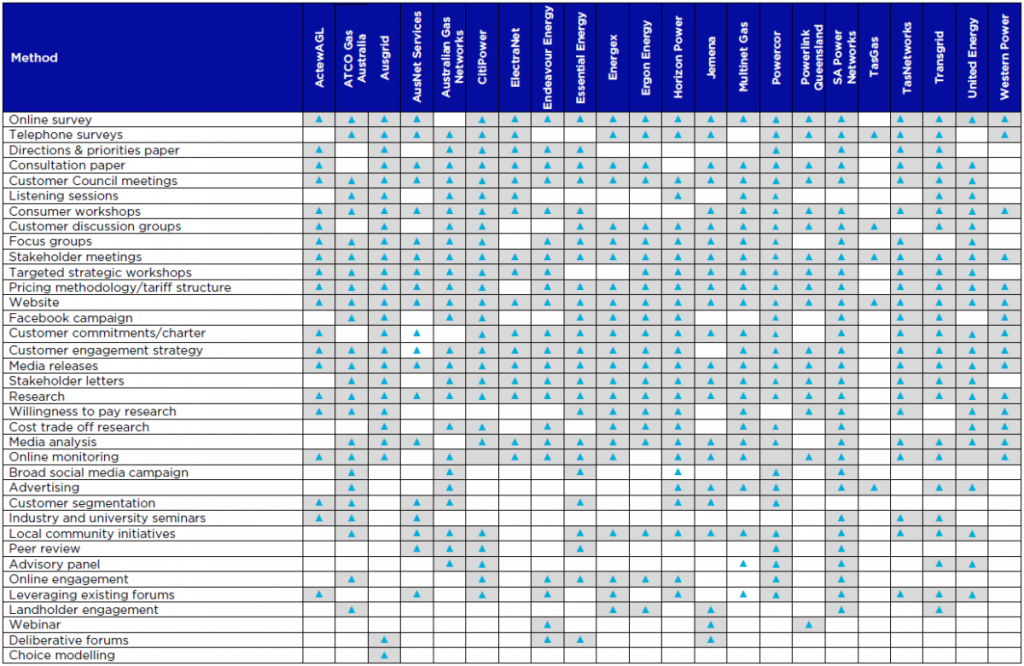How Networks are engaging with their customers
Engagement can occur around a diverse set of issues or challenges. As an example, networks routinely engage with customers on pricing, reliability, planning and environmental performance issues.
Customers’ perspectives help networks ensure that their services are relevant and responsive to the needs of households, businesses and large energy users.
Typical issues for customers to consider through engagement process and programs include:
- Reliability: What are customers’ expectations around network reliability now and for the future?
- Planning: What do customers want the capacity of their future grid to be?
- Pricing: Which types of network charges will help drive lower the total costs of the grid for the community in a fair and equitable way?
- Infrastructure: What priorities do individual communities assign to the impacts of undergrounding network infrastructure on visual amenity, community safety and the level of network charges?
More than this, in the future consumer engagement will increasingly have a localised focus to support:
- Consideration of demand management options
- Connections of embedded generation, energy storage and energy information
- Improved information on power supply and outages
As the energy system transforms customers will engage in decisions on energy use like never before, as they ‘shop around’ to lower their bill, respond to price signals and increasingly become producers of energy in their own right. In this new and evolving environment the preferences of consumers will shape the development of future networks.

Survey of consumer engagement methods used by Australian energy networks – July 2017 (An update on the catalogue of energy network business engagement tools by the AER’s Consumer Challenge Panel (2014).)
Case studies
Throughout the Customer Engagement Handbook, there are references and web links to further resources on specific topics and case studies of engagement drawn from Australian energy network businesses. The case studies are presented without naming the specific network business, but they include sufficient detail that the source could easily be identified. The objective of the case studies is to focus on the range of engagement activities and approaches that have been used, rather than to draw attention to individual businesses.
- Case Study One – Outlines the Distributors approach to the development of its Tariff Structure Statement and to test engagement practices within a meaningful program.
- Case Study Two – Outlines the key lessons from a Powerline Project and how these continue to influence the Distributor’s community and stakeholder engagement approach.
- Case Study Three – Outlines the establishment of, ‘The Voice of the Customer’ (VoC) Program to ensure the perspective and ‘voice’ of customers were considered in the business’s activities and decisions
- Case Study Four – Outlines engagement processes in the development of Gas Access Arrangement (AA) information for 2016-21, testing the effectiveness of a recently developed Consumer Engagement Strategy.
- Case Study Five – Outlines the engagement program with stakeholders and customers on the tariff structure statements to help them understand cost-reflective tariff structure options, contribute to the proposed changes, and help consumers understand the impacts of these changes.
Methods for Engagement
When designing a customer engagement strategy, energy network businesses have a suite of methods available to them with which to build relationships with customers. A combination of these may be drawn upon in order to ensure that they achieve customer participation, as
appropriate, across the possible spectrum of engagement levels.
It is important to note that no one method is “best”, and the method chosen needs to be fit for purpose
Some examples of engagement are described here, split into the three broad goals of provide information, consult and involve, and collaborate and empower.